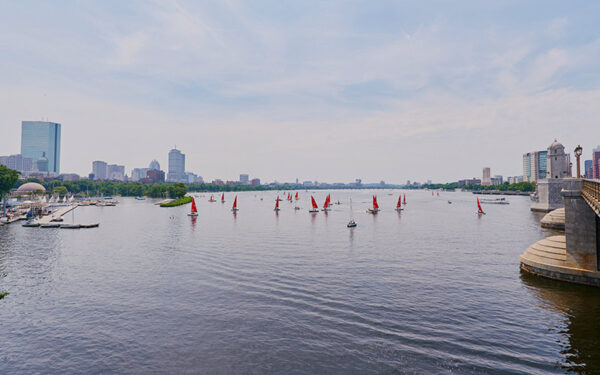Protecting the Charles River from Stormwater Pollution
The Charles River today is an incredible recreational and ecological resource flowing through the heart of Boston and surrounding communities. On any given summer day, you’ll see scores of people sailing, boating, kayaking, and fishing its waters. But for all the progress made in cleaning up the iconic river in recent decades, significant threats to its health remain.
CLF in Action
CLF and the Charles River Watershed Association are pushing for cities and towns to better control their polluted stormwater runoff into the iconic river. We want to ensure that state-issued water pollution permits set strict but reasonable limits so local communities can do their part to keep the Charles – and all of Massachusetts’s waterways – clean and healthy.
We’re also maintaining our pressure on the Environmental Protection Agency to uphold the Clean Water Act and require large individual polluters to have permits for their stormwater discharge. Commercial, industrial, and institutional polluters do extensive damage to our precious waters. Permitting them would not only control the stormwater pollution they can discharge, but also guarantee they pay their fair share of pollution management costs.
What’s at Stake
Stormwater pollution is hurting the Charles River, the wildlife that depend on it to be healthy, and the communities that pay when it’s not.
Along the Charles’ 80-mile course are thousands of acres of strip malls, office parks, and other industrial development – along with their flat roofs and huge parking lots (80% of the land area in Greater Boston is paved). When it rains or snow melts, stormwater rushes off those mirror-like impermeable surfaces, picking up debris, fertilizer, and other toxic pollution along the way. The result: contaminated dirty water draining into the Charles and other rivers, lakes, and streams across New England.
EPA’s failure to uphold their legal responsibility to require polluters to control their runoff puts the Charles’ water quality at risk and leaves cash-strapped communities – and all of us as taxpayers – on the hook for the costs of this damaging pollution.
At even greater risk is our health. Phosphorus is one of the worst pollutants swept into the river with stormwater. Too much phosphorus in the water causes massive blue-green algae outbreaks, which are toxic to people, pets, and wildlife.



